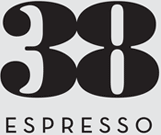Roasting

“The Perfect Curve”
Roasting is a science, deciding on everything from pre or post blending, batch size, drop temperature, turning point, burner percentages, rate of rise, end point temperature, end point time are some of the variables that we continually develop.
We champion the perfect espresso and a key factor in the perfect espresso is the perfect curve.
The perfect curve is a fundamental component in this, we don’t hand roast and make no apology for it.
We use technology, science, instruments and software to evaluate and improve on our practices, so that your customers only job is to “Enjoy”

Drop Temperature
This is the temperature at which we load the green beans from the hopper into the roast chamber
Drying Phase
The drying phase is where the moisture content in the green beans starts to be removed, we are very careful to have the beans in the hopper as minimal time as possible as the residual heat in the hopper will affect the drying phase.
Turning Point
The point at which the temperature in the roast chamber starts to rise after loading the beans, the beans do not drop in temperature – they rise in temperature as soon as they are in the chamber.
Maillard Reaction
Maillard reaction is named after French Chemist Louis Camille Maillard, who described it in 1912. This is the browning reaction that occurs when reducing sugars and amino acids react with each other.
Middle Phase
A number of actions happen during the middle phase including, bready aromas are apparent, expansion of the beans, caramelization as well as the distinctive change in colour.
First Crack
This is like a symphony to a roaster and is caused by a build-up of water vapour, CO2 and chaff releasing from the beans. This is fascinating to watch as the beans seem to take on a life of their own with popping, jumping and a cracking sound.
Development Phase
The section referred to as development phase is slightly misleading as the beans will develop and change throughout the roasting cycle. The development phase is essentially where we decide how long we are going to roast from first crack and to what temperature. These factors will have a distinct influence on bean development, acidity, flavour and profile.
End Point
The end point is the temperature at which we stop the roast and immediately start the cooling process.

As you can see from the graph, acidity, body, aroma and bitterness all change at different rates and independently of each other. The roasters challenge is to control the roast profile and create the optimum balance of all of the above for that “Perfect Espresso” profile.
